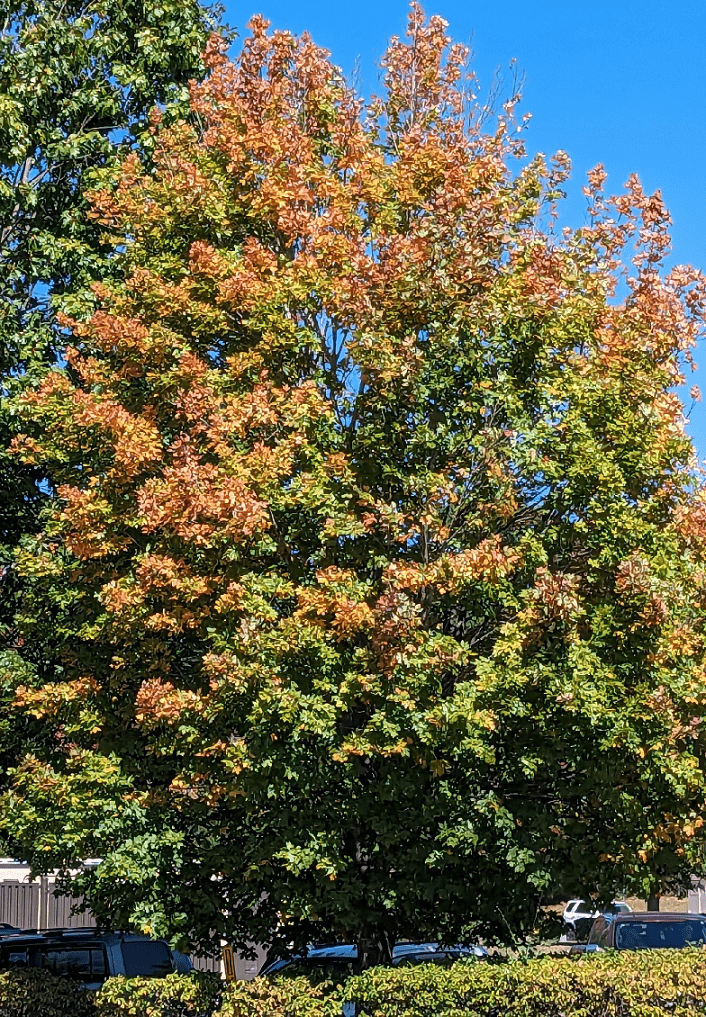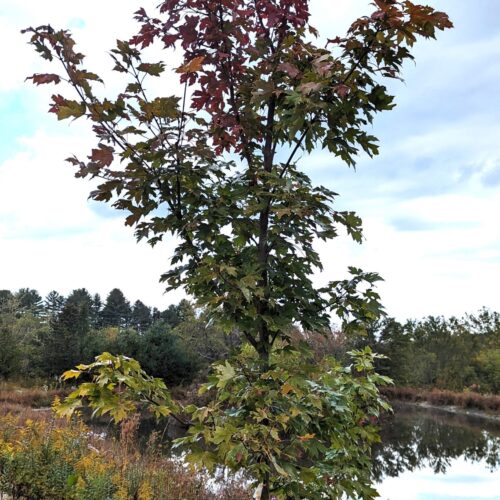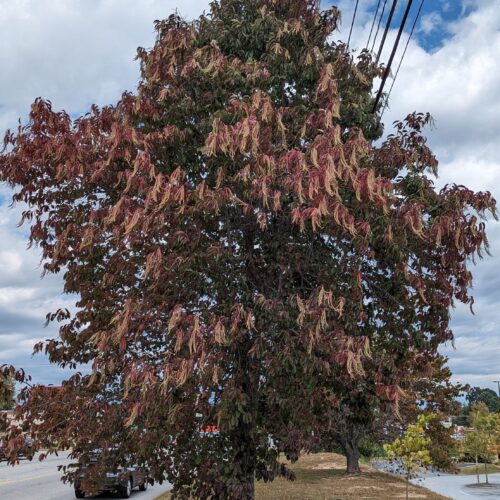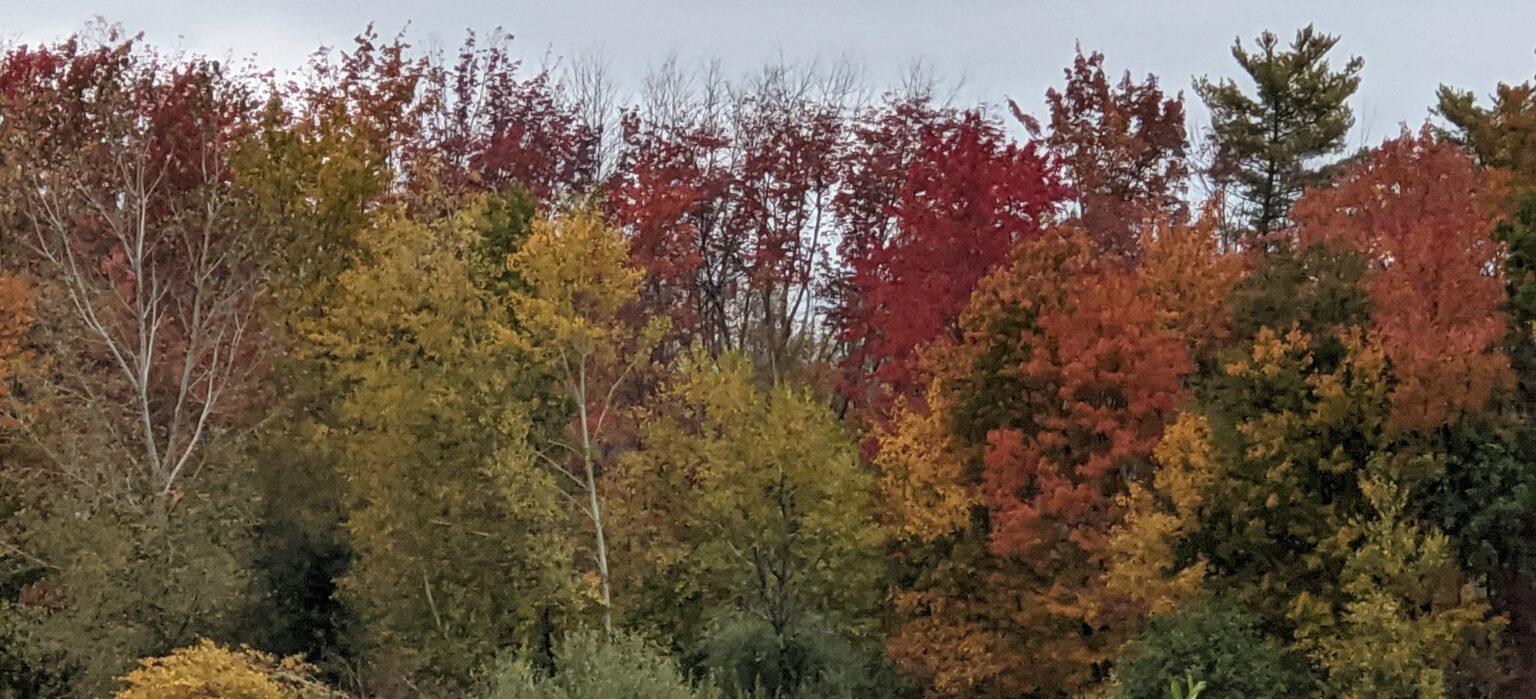Fall color in New England may be subdued this year, but in western North Carolina we are set for a great fall color season!
We’re experiencing a period of warm days and cool nights that are bringing out the colors in trees. Unlike the New England region, we are also experiencing dry conditions brought on by El Nino. Two sequential mornings of 37 F are helping to develop the fall color here!
Where Color Comes From
When leaves develop, they produce several types of phytochemical pigments that reflect in a particular region of the light spectrum. The most well known, chlorophyll, reflects green light. Anthocyanins reflects reds and purples, while carotenoids reflects yellow and oranges. The reds, purples, yellows and oranges are masked by the green of chlorophyll. With the onset of fall, the chlorophyll is broken down revealing the hidden foliar pigments.
Below follows a fall color guide to this region.
2023 Fall Color Guide*
| 5000’+ | 4000-5000’ | 3000-4000’ | 2000-3000’ |
| Oct 1-9 | Oct 9-16 | Oct 16-23 | Oct 23-31 |
| Suggested Locations | |||
| Grandfather Mountain | Blue Ridge Parkway | Pisgah National Forest | Asheville |
| Beech Mountain | Great Smoky Mountains National Park | Boone/Banner Elk | Cherokee/Bryson City |
| Clingmans Dome | Maggie Valley/Waynesville | Chimney Rock/Lake Lure | |
| Mount Mitchell |
*Table adapted from Blue Ridge Mountain Life
Some Featured Standouts
Flowering dogwood (Cornus florida) is a native, spring flowering understory tree that displays white or pink, bracts. The branches grow horizontally out from the main stem, making the tree distinctive in the landscape. Branching is dichotomous (that is, buds grow opposite the other). One of the early trees to color up from red to burgundy.

Sugar Maple (Acer saccharum). The sugar maple is a native tree that has exceptional fall colors of yellow, orange to burnt-orange on the same tree. As implied by its name, this tree is tapped for its sugary sap for maple syrup in early spring: 40 to 44 gallons of sap needs to be collected and reduced for just one gallon of syrup!
Plant in full sun in well-drained soil. Add one inch of compost and mulch well. Keep watered the first year or two after planting. Delay pruning until the tree is in full leaf, as pruning prior to bud break results in bleeding from the cut points.
- Native tree
- Leaves are simple, often with three lobes and have an opposite branching pattern
- Brilliant fall color
- Grows in full sun and partial shade
- Will grow in a wide range of soil pH’s
- Tapped for maple syrup
- Prefers well drained, loamy soils
- Does not tolerate droughty conditions
- Susceptible to Asian longhorned beetle, an exotic wood borer
- Prune trees in winter prior to sap rising to avoid bleeding

Red Maple (Acer rubrum) is a native tree in the Sapindaceae (formerly, Aceraceae). Red maple blooms very early in spring, an important early pollinator species. It has grayish bark that flakes in a fish scale pattern when older. Its branching has an opposite pattern of growth and its leaves though entire are palmate and lobed. Its fruits are two-winged samaras or whirlygigs. The tree grows best in moist soil in full sun. The brilliant red fall color is best in acidic soils. There are a number of cultivars in the trade often selected for fall color, such as ‘October Glory’.
The Freeman maple, a hybrid of red and silver maples, that combines the brilliant fall color and strong branch attachments of the former with the fast growth of the latter. It is also less susceptible to interveinal chlorosis of either species when grown in high pH (alkaline) soils.
- Native tree
- Leaves are simple, often with three lobes and have an opposite branching pattern
- Brilliant fall color
- pH dependent – in acidic soils, red; in alkaline soils, yellow
- prefers moist soils
- Susceptible to spotted lanternfly
- Cultivars and hybrids in the trade (Acer x freemanii)
- Acer x freemanii is a cross of red and silver maples


Honey locust is a member of the legume (Fabaceae) family, and as such forms root associations with rhizobial bacteria, which fix atmospheric nitrogen. In exchange for bacterial nitrogen, the tree provides sugars to the resident bacteria. As its name implies, the species has thorns which are branching (tri = three, acantha = thorn); but the cultivar, ‘inermis’ is thornless (literally, a three-thorned thornless tree)! A native tree, it is attractive to pollinators making it a great wildlife habitat tree. Trees have fine, pinnately divided foliage.
Some potential problems include borers, spider mites, webworms, gall midge and powdery mildew. Managing pest issues starts with keeping trees healthy including, watering, fertilization and avoiding bark injuries by keeping mowers and string trimmers away from the base of the tree.
‘Shademaster’ is upright and vase-shaped. It has been planted (perhaps, overplanted) in street tree plantings to replace the American elm. It has dark green foliage, is fast growing and casts dappled shade, allowing turf and ground covers to be planted under its canopy. Fall color is yellow. It does not set fruit, so fall clean-up is easy. Plant in full sun, top dress with compost or other organic matter and mulch well.

Sourwood (Oxydendron arboretum) is a native tree in the Ericaceae, the Rhododendron family. Like its family, it grows in acidic soils rich in humus. More prevalent in the Appalachian Mountains, its nectar is gathered by honeybees, making a very distinct honey. It has a brilliant red to burgundy fall color.

Join us next week when we get back to the autumn garden.
~ Signing off for now, Joe

